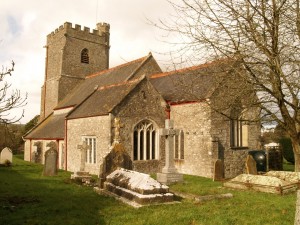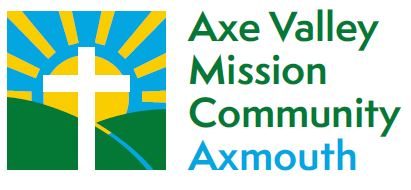The churchyard area is now extensive, and a costly item to maintain, but we try to use to best advantage the limited funds available for this purpose. It is still open for burials and the interment of cremated remains but the unused space is rapidly diminishing. The original burial area extended only to a point opposite the westernmost end of the adjacent Village Hall. In July 1893, the Bishop of Exeter consecrated a new plot of land, which brought the boundary as far as the present centre wall, the old wall being demolished later. This sufficed for some years when, following a further gift of land from the Stedcombe Estate, a second cemetery extension was made available and duly consecrated by the Bishop of Crediton on 10 May 1938, thus bringing the churchyard up to its present-day size.

Surviving pictures of more than a century ago point to a rather bleak appearance, which was improved by the planting of several yew trees in 1904. Further enhancement has been effected more recently, especially to pathways, and by the gift of a number of flowering trees, planted to the memory of former parishioners. Another significant move came in 1971, with the completion of the new gateway and path leading into the former school playground and Village Hall.
Like most other local village schools, that at Axmouth had been downgraded to County Primary status under the Education Act of 1944 but, uniquely in the local area, had been closed completely in 1959, with the pupils transferred to Seaton Primary School, the facilities at Axmouth having been judged substandard, the restricted site precluding any hope of expansion doubtless being a deciding factor. (This last aspect remains a problem today, the former playground being used as an inadequate car parking area for both church and Village Hall). The establishment of the new gateway and right-of-way was to encounter some complexities. The original school had been built in 1845 upon land previously part of the churchyard but the school extension of 1894 was built on land provided by the Stedcombe Estate. As the two portions were in effect a single building, but stood on land within the shared jurisdiction of both civil and ecclesiastical authorities, the necessary legal processes to set up both the Village Hall Management Deed and, later, the transaction for the churchyard pathway, caused some difficulties but was finally resolved in a satisfactory manner.
There are a number of interesting monuments to be seen: many are extremely ancient, and upon these, all identification has long become illegible. Some, now unreadable, are described in Pulman’s Book of the Axe; others with partly missing names and dates can sometimes be deciphered from the Parish Burials Register. Some of the more prominent inscriptions still legible are:
c1894: Revd S. C. Davis, former Vicar of Axmouth and chiefly responsible for the restoration of 1889. A large cross of polished red granite, placed near the west door of the church, also commemorates several members of his family.
1910-1959: The Stephens family. Samuel Sanders Stephens came to Axmouth in 1891, having purchased the manor and estate at auction after the death of the previous owner. He took an active part in village life, and also assumed wider responsibilities. He was a great benefactor to Axmouth, and is chiefly remembered for his enterprise and financial support in obtaining free public passage across Axmouth Bridge, until 1907 subject to tolls for both vehicles and foot passengers. He died in 1910, and his ailing widow followed him in 1913. The estate passed to the only surviving offspring, an unmarried daughter, Maud Elizabeth Stephens. By an unusual arrangement, her old governess, an Irish lady named Florence Katherine Leech, and who had remained with the family, took over the running of the estate, nominally jointly with Miss Stephens. Before long, the two ladies came to be regarded by the village inhabitants as gentry of virtually equivalent status. Maud Stephens died in 1959 and was interred with her parents. Miss Leech had died a few years earlier, in 1952, at the age of 91 years. She was not buried in the family grave, but in her own plot, adjacent, but over the wall in the new churchyard extension. After the death of Miss Stephens, the estate was placed upon the market once again, and was purchased by Sir John Loveridge who, with Lady Loveridge, resided at Bindon Manor. Stedcombe House has, in recent years, come under separate ownership, and a complete restoration has been effected. Many of the farmhouses and other properties within the old estate have also been sold to individuals, although, for the most part, the actual agricul-tural land has been retained, and the operational farming side largely centralised.
Moving across the churchyard, some of the monuments to the Hallett family may be seen at the south-east corner of the Bindon Chapel. A little further over, and close to the south wall, are some headstones erected to mark the last resting places of members of the Allhusen family, who had first come to live at Pinhay House around 1892, restoring the old name of the property. The previous owner, Levi Ames, by now deceased, had renamed it Clevelands. Pinhay for centuries formed the easternmost part of the old Axmouth parish, but in recent years boundaries have changed and the connection with Axmouth has been severed.

